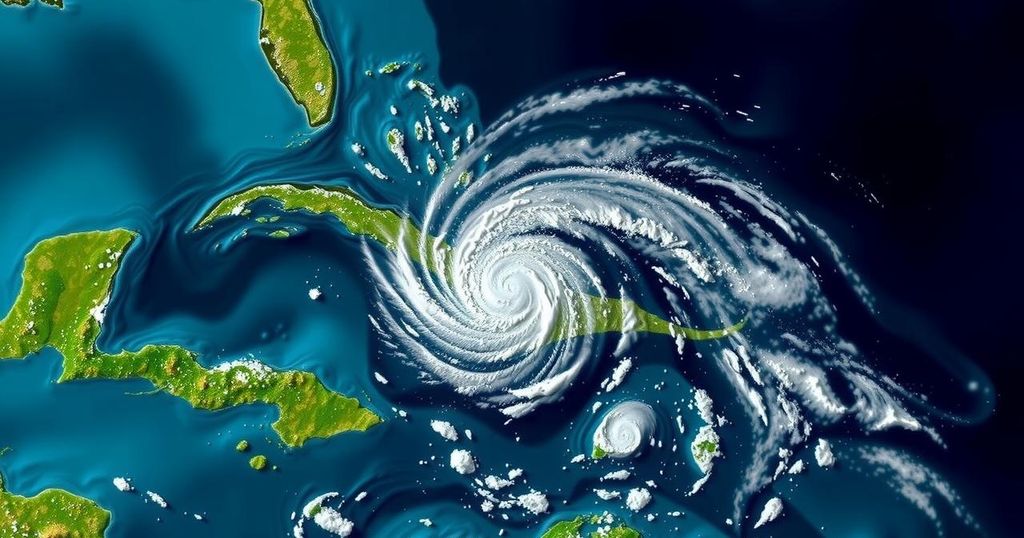Global news
ACCUWEATHER, ASIA, BERNIE RAYNO, COLOMBIA, CUBA, EVACUATIONS, FLORIDA, GULF OF MEXICO, HURRICANE, HURRICANE SEASON, MEXICO, NATIONAL HURRICANE CENTER, NATURAL DISASTER, NHC, NORTH AMERICA, PHILIPPINES, PROGRESO, PUERTO RICO, RAFAEL, SOUTH AMERICA, WEATHER, WIND GUSTS
Leila Ramsay
0 Comments
Hurricane Rafael Strengthens in Gulf: Impacts and Season End Date
Hurricane Rafael has reached Category 3 strength and is projected to move westward in the Gulf of Mexico, away from Florida, with expected weakening. A trough near Puerto Rico brings heavy rain but has low chances of development. The hurricane season lasts from June 1 to November 30, requiring continued vigilance from coastal residents.
As Hurricane Rafael intensifies into a Category 3 storm with sustained winds reaching 120 mph, it is projected to take a path through the Gulf of Mexico, moving away from Florida. The National Hurricane Center (NHC) indicates that while Rafael is expected to weaken, it may generate dangerous surf and rip currents along the Gulf Coast. In addition, a trough of low pressure near Puerto Rico is producing heavy rain, though its potential for development remains low. As swells from Rafael affect the Gulf, residents are advised to remain vigilant and prepared. Rafael caused significant disruptions in western Cuba by knocking out the island’s entire electrical grid before intensifying upon entering the Gulf. Current forecasts from AccuWeather suggest a shift in the storm’s track westward due to a mid-level ridge, reducing the likelihood of landfall in Florida. Meteorologist Bernie Rayno noted that continued wind shear will contribute to a gradual decline in the hurricane’s intensity. The Atlantic hurricane season is officially recognized as running from June 1 through November 30, covering the northern Atlantic Ocean, Caribbean Sea, and Gulf of Mexico. As we move through the latter part of the season, continued monitoring of active systems is crucial for all coastal residents. The NHC continues to track other potential developments, notably the low-pressure system near the Greater Antilles, which presents a minimal chance for strengthening. As this situation progresses, updated forecasts and alerts will help ensure public safety and preparedness.
The National Hurricane Center provides essential updates and forecasts on tropical storms and hurricanes within the Atlantic basin, which includes the ocean, the Caribbean Sea, and the Gulf of Mexico. The hurricane season runs from June to November, during which time the likelihood of cyclonic activity significantly increases. Ongoing monitoring and early warning systems are crucial for coastal communities to prepare for potential impacts from tropical systems. The case of Hurricane Rafael illustrates the complexities of seasonal hurricane behavior and forecasting, especially during the latter part of the season.
In summary, Hurricane Rafael has intensified to a Category 3 storm while veering away from the U.S. mainland, thereby reducing the immediate risks for Florida. However, swells and potential rip currents will pose hazards along the Gulf Coast. Residents are encouraged to stay informed as the hurricane season continues until the end of November, with vigilance necessary regarding both Rafael and other developing weather systems.
Original Source: www.timesreporter.com




Post Comment